The physics community was very pleased to hear the LIGO collaboration announcing the observation of a third gravitational wave event last week.
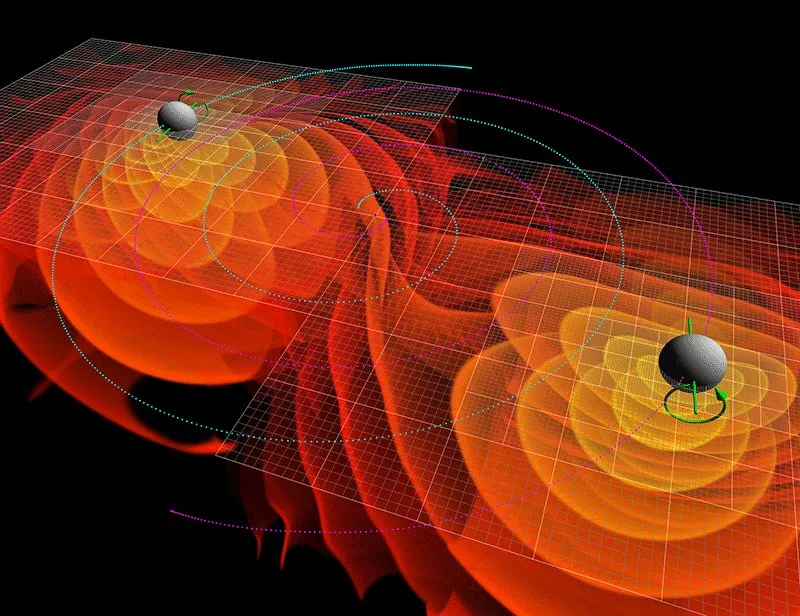
[image credits: Wikipedia]
This observation was well covered on Steemit by several authors (please check the #science category), and I was happy to be on time to cover it within my own post where I explain in addition how LIGO actually works.
This is known as the third record of a gravitational wave event in history, which means that there were two preceding events.
But we may in fact be in the presence of three preceding events and not two. This is what I will talk about today.
GASTROPHYSICS?
Before discussing this 3 versus 4 gravitational wave events story, let me introduce the concept of gastrophysics (that is also the first word of the title of this post). This word is very news in the field of high-energy physics, and if you in fact google it, you will only find entries about the science of cooking.
I will not talk about gastronomy! No worries!
One indeed needs to search for gastrophysics and gravitational waves altogether to find much more relevant entries for physics.
Gastrophysics is roughly speaking what some call a branch of astrophysics dedicated to the study of strong-field general relativity that includes in particular black holes, and this the gravitational waves that they can induce.
THE FIRST OBSERVED GRAVITATIONAL WAVE: THE MONSTER
On February 11th, 2016, the LIGO collaboration has announced the first detection ever of gravitational waves.
The waves have been emitted about a billion years ago by the merging of two black holes into a single black hole. A part of the mass of the two initial back holes has been converted into gravitational waves that hit Earth on the 14th of September 2015.
This event is illustrated below, where one can see the two black holes rotating around each other before merging and emitting a bunch of gravitational waves during the entire process.
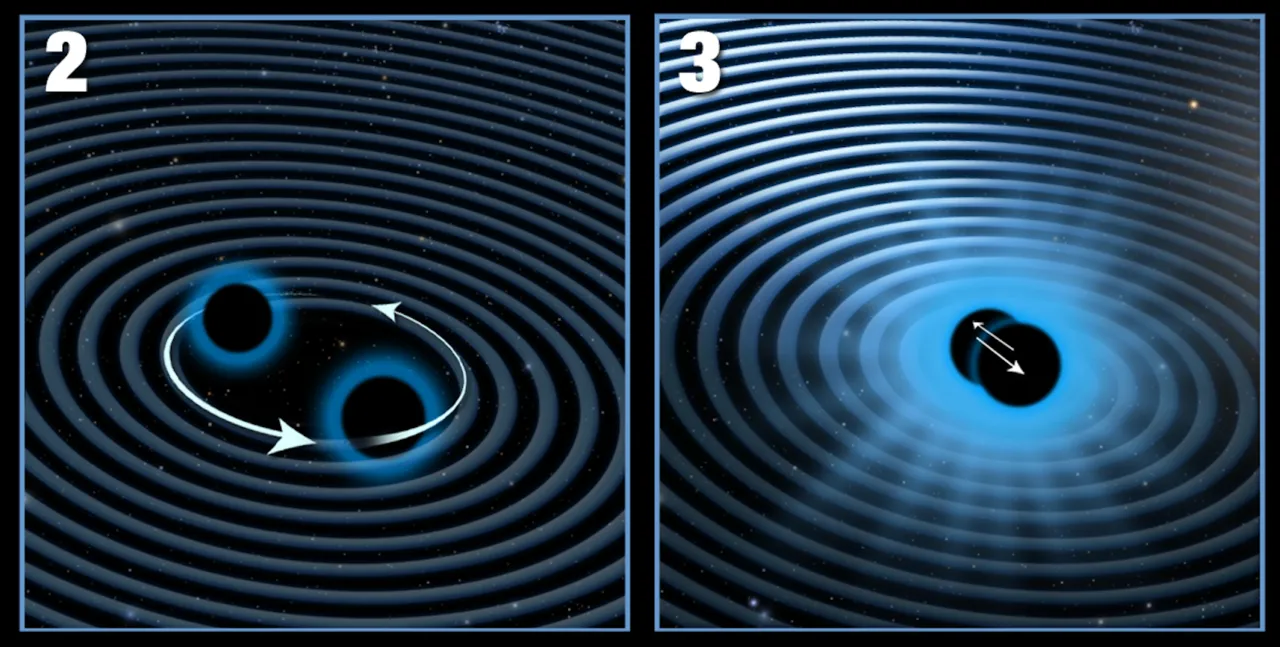
[image credits: NASA]
This claim was based on a larger than 5.3 sigma significance, which means there was less than one chance out of about 10 millions for the event to be some noise.
This is the probability that is necessary for scientists to claim a discovery. We like to be sure :)
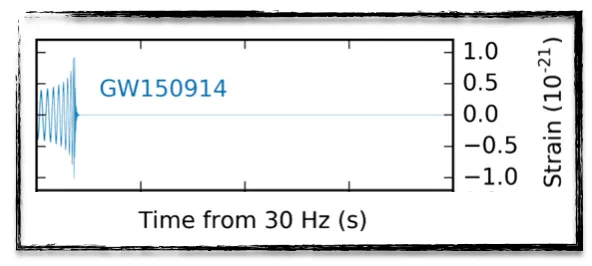
[image credits: LIGO and Virgo]
This event is named GW150915, with the first two letters GW standing for gravitational wave, but also the Monster. It has been recorded as shown on the figure on the right extracted from the LIGO publication.
One can notice the amplitude of the event (that is large compared to all others) as the vertical spread of the figure, and its duration (that is short compared to the other events) as the horizontal spread of the figure. I recommend to compare with the event shown below.
From this pattern, it has been concluded that the wave is issued from the merging of two black holes in one.
AND THE FOLLOWERS: CINDERELLA AND THE 3RD SISTER
In June 2016 came another news mentioning the observation of one additional gravitational wave and a half by the LIGO detectors: GW151226 and LVT151012.
GW151226 (the third sister) is very similar to the Monster, except that its intensity is smaller and that he lived during almost 2 seconds. Its signature as a black hole merger was however clearly identified.
I will not talk about this one in the following.
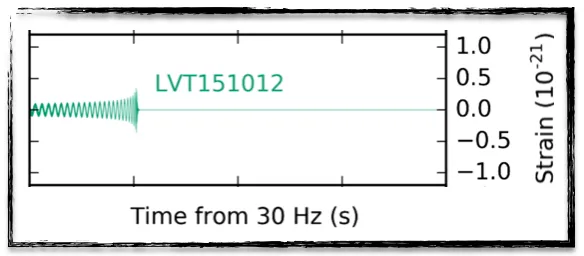
[image credits: LIGO and Virgo]
LVT151012, also known as Cinderella (and now we can understand the title of this post), is a bit different. It is shown on the left. It is kind of short-lived (but longer-live than the Monster), and has a smallish amplitude.
While experts are very confident about its gravitational wave nature, the statistical significance of the signal is modest: 1.7 sigma.
This means this event has 13% of chances of being something else (i.e., noise) than a gravitational wave produced by the merging of two black holes.**
So not enough for the standards!
TWO OR THREE EVENTS? AND THE BAYES FACTOR COMES IN
It is now time to finalize this post.
The problems with this confidence level of Cinderella is that we have the foillowing:
- We have en event that is thought as a gravitational wave originating from the merging of two black holes with a probability of 87%.
- The probability of this event being something else is 13%.
But, do we really believe that we have one chance out of seven (that is 13%) that this event is not a gravitational wave?
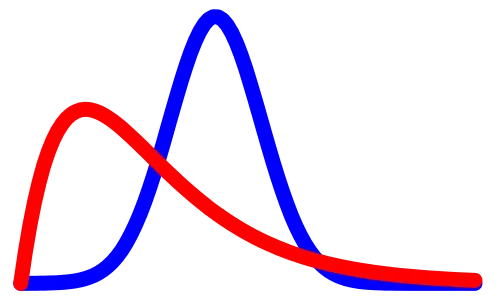
[image credits: Wikipedia]
There is a quantity that could help us to answer the latter question: the Bayes factor.
In case where two hypotheses are equally likely, a Bayes factor of 100 will change the odds to 100 to 1.
Equivalently said, if we have two hypotheses (either we have a gravitational wave event stemming from the merging of two black holes, or not), and the odds are 100 to 1 in favor of one of them, a Bayes factor of 10000 will invert those odds.
If the Bayes factor is large, we are thus confident in the conclusions.
We have 87% of chance that the Cinderella event is a gravitational wave event. How should we change the noise hypothesis so that we could conclude Cinderella is noise? The answer is 10000000000.
Yep… This is a very strong sign Cinderella is really a gravitational wave event. But it will never be considered as such…
For information, the Bayes factor of the Monster is 3 × 10125 and of the third sister of 1026. These are extra strong signs of gravitational wave events too, as expected :)
TAKE-HOME MESSAGE AND REFERENCES
In this post, I discussed the gravitational wave events that LIGO recorded previously to the one of last week. I discussed some statistics showing that one of these event, that is named Cinderella and that has not been classified as a gravitational wave (and will probably never be), is very likely a gravitational wave too.
- The Physics Review Letter about the latest LIGO discoverycan be found here.
- A LIGO article about the first two (or three) gravitational wave events is here.
- My own article about the new LIGO event is available here.
- An article by @anarchyhasnogods about the first observations of gravitational waves in history can be found here. More information in the references there in.
- Lecture notes about gravitational waves and statistics can be found here.